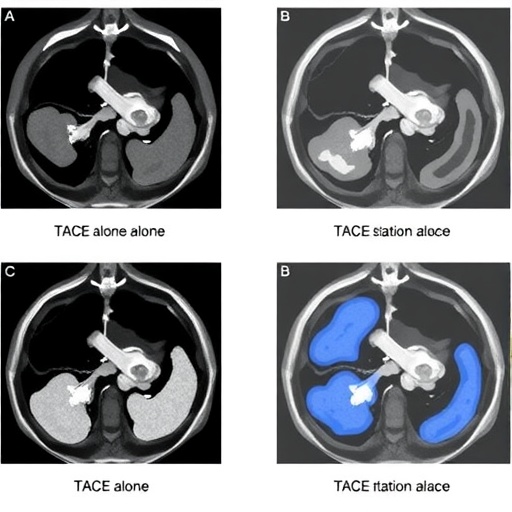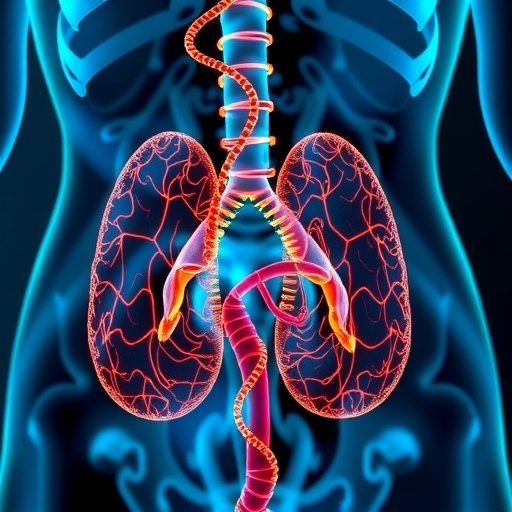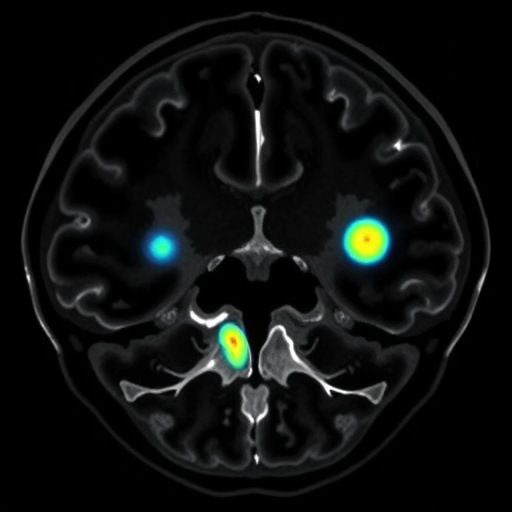In recent years, the approach to treating neuroendocrine neoplasms (NENs) with liver metastases has generated significant interest in the oncology community. A correction published in the Journal of Cancer Research and Clinical Oncology highlights crucial comparisons between two distinct therapeutic strategies: transarterial chemoembolization (TACE) alone and TACE combined with synchronous ablation. The groundbreaking study conducted by Huiyi, S., Feihang, W., and Sothea, Y., pits these two methodologies against one another, aiming to elucidate the most effective treatment protocol for patients afflicted with this challenging condition.
Neuroendocrine neoplasms are a diverse group of tumors that can arise in various organs, including the pancreas, lungs, and gastrointestinal tract. Their capability to metastasize to the liver poses a significant treatment challenge; therefore, understanding the optimal therapeutic strategies is critical to improving outcomes. TACE, a procedure that delivers chemotherapy directly to the tumor while simultaneously blocking its blood supply, has emerged as a potential treatment option. However, with the advent of innovative synchronous ablation techniques, the conversation surrounding NEN treatment has evolved.
The authors of the correction examined the outcomes associated with TACE alone against those experiences alongside synchronous ablation. This study is pivotal as it navigates through unchartered waters of comparative effectiveness research within a field that has historically leaned towards singular treatment approaches. The correction sheds light on previously published findings, underscoring methodological inconsistencies, which is paramount for advancing clinical understanding.
Central to their findings is the potential for enhanced therapeutic efficacy when combining TACE with synchronous ablation. Using an integrated approach not only targets the tumors more aggressively but also reduces the likelihood of recurrence, which is a common concern among patients. The synergy of these techniques may play a vital role in optimizing patient prognoses, thereby setting new treatment standards in the realm of neuroendocrine neoplasms with liver metastases.
The study presents a careful examination of patient outcomes, revealing not only a statistically significant decrease in tumor size but also an improvement in survival rates when the combined approach was utilized. Strategies that incorporate both TACE and synchronous ablation could eventually become the gold standard, shifting clinical practice paradigms. The exploration of such methods aligns with a broader trend in oncology towards personalized, multi-modal treatment strategies.
Within the context of treatment modalities, the role of imaging in facilitating the precise delivery of therapy is paramount. The correction emphasizes the importance of advanced imaging techniques in identifying and tracking liver metastases effectively. As technology continues to evolve, the capabilities of imaging can enhance the accuracy of both TACE and ablation procedures, promoting more effective interventions and better outcomes.
Moreover, the authors highlight the significance of patient selection in optimizing treatment efficacy. Not all patients may benefit equally from these combined approaches, and understanding the genetic and phenotypic profiles of tumors could help tailor treatments to individual needs. This personalized approach can further refine the therapeutic landscape and ensure that resources are allocated to patients most likely to benefit from aggressive treatment.
The implications of this study transcend beyond immediate patient outcomes; they herald the onset of future research directions. The correction encourages further investigations into the biological mechanisms underpinning the efficacy of combined therapies. By understanding how these modalities interact at cellular and molecular levels, researchers may uncover new therapeutic targets that can revolutionize treatment paradigms.
As the conversation continues, the findings advocate for a re-evaluation of current treatment benchmarks. Recognizing the nuances in tumor behavior and response to therapy is crucial for enhancing overall patient care. Healthcare providers must remain attuned to emerging evidence that challenges the status quo, fostering an environment conducive to clinical innovation and progress.
Furthermore, this research underscores the collaborative nature of modern medical research, wherein interdisciplinary teams work together to push the boundaries of our understanding. The collaboration among the authors and their institutions represents a broader commitment to advancing care for patients with challenging diagnoses. As more professionals come together to address complex health issues, the potential for meaningful advancements in treatment regimens will only grow.
Ultimately, as clinicians embrace this new framework of understanding, the responsibility rests on their shoulders to integratively incorporate emerging evidence into clinical decision-making. The evolving landscape of treatment for neuroendocrine neoplasms necessitates a shift toward synergy—combining therapies that work together can yield profound results for patients.
As more evidence mounts in favor of combined therapeutic strategies, the emphasis on continuous professional development for oncologists and healthcare professionals remains critical. Education and training programs must adapt to include new findings and encourage the implementation of novel techniques in clinical practice. The goal is to equip healthcare providers with the knowledge and skills necessary to navigate the complexities of evolving treatment modalities.
In summary, the correction published in the Journal of Cancer Research and Clinical Oncology enhances our understanding of the treatment protocols for neuroendocrine neoplasms with liver metastases. The study decisively compares TACE alone with TACE plus synchronous ablation, inadvertently reshaping future research trajectories and clinical applications. As this dynamic field develops, the commitment to patient-centric care will remain at the forefront, driving ongoing advancement in the management of these complex tumors.
With ongoing research and the integration of innovative treatment strategies, patients grappling with neuroendocrine neoplasms can look forward to improved treatment options and outcomes. The collaborative effort reflected in this study heralds a new era of hope for those affected, indicating that advancements in oncology continue to evolve in promising ways.
In conclusion, the shift from singular treatment methods towards more integrated approaches signifies a pivotal moment in the management of neuroendocrine neoplasms. With continuous research and collaboration, we can pave the way for future breakthroughs that enhance patient care and improve survival rates.
Subject of Research: Treatment comparison of TACE alone versus TACE combined with synchronous ablation for neuroendocrine neoplasms with liver metastases.
Article Title: Correction: Comparison of TACE alone versus TACE combined with synchronous ablation for neuroendocrine neoplasms with liver metastases.
Article References: Huiyi, S., Feihang, W., Sothea, Y. et al. Correction: Comparison of TACE alone versus TACE combined with synchronous ablation for neuroendocrine neoplasms with liver metastases. J Cancer Res Clin Oncol 151, 292 (2025). https://doi.org/10.1007/s00432-025-06302-x
Image Credits: AI Generated
DOI:
Keywords: Neuroendocrine neoplasms, liver metastases, TACE, synchronous ablation, treatment comparison, oncology.
Tags: cancer research findingscomparative effectiveness research in oncologyliver cancer treatment strategiesliver metastases therapeutic approachesNEN treatment protocolsneuroendocrine neoplasms managementoncology community advancementssynchronous ablation techniquesTACE treatment for liver metastasesTACE vs ablation therapytransarterial chemoembolization efficacytreatment outcomes for liver tumors





